Last Updated on 29 July 2025 by Greg Brookes

The kettlebell overhead press is one of the most foundational strength-building movements in kettlebell training. When executed with proper form, it targets the shoulders, triceps, upper back, and core, while also developing total-body tension and control.
More than just a shoulder exercise, the overhead press teaches proper alignment, breathing mechanics, and strength transfer from the ground through the torso to the hands.
What Is the Kettlebell Overhead Press?
The kettlebell overhead press involves lifting a kettlebell from the racked position at chest level to a full lockout overhead. It can be performed with one arm or two, standing or kneeling, and with or without momentum.
You can choose between:
- Single-arm or double-arm pressing
- Strict presses or push presses
- Half-kneeling, tall-kneeling, or standing positions
Each variation has its own purpose and progression path.
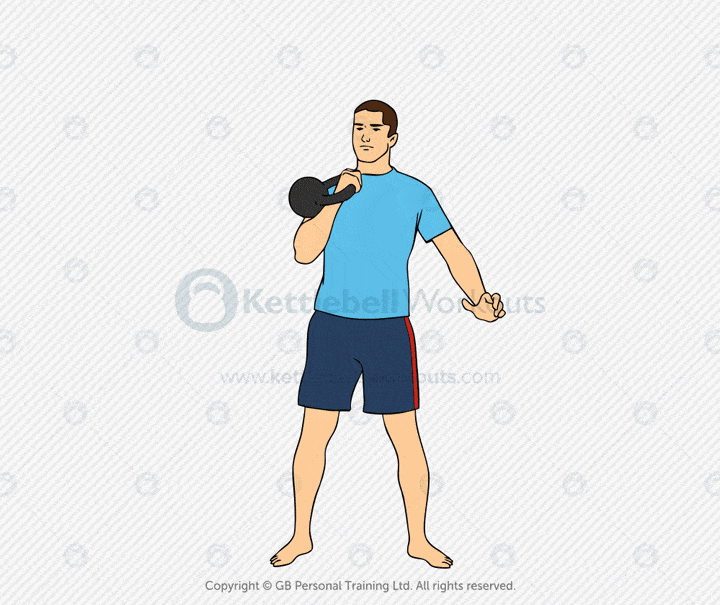
How to Perform the Kettlebell Overhead Press
- Begin by cleaning the kettlebell into the racked position at shoulder height. Your wrist should be straight and the bell resting comfortably on your forearm.
- Stand tall with feet about hip-width apart. Brace your core, squeeze your glutes, and pack your shoulder.
- Inhale, then press the kettlebell vertically in a straight line overhead.
- Keep your shoulder down and back as you lock the elbow. The bell should finish above the shoulder, not in front.
- Lower the kettlebell slowly with control back to the rack position.
- Reset your posture and repeat.
Avoid arching your back or flaring the ribs. Keep tension through your entire body for a safe and strong press.
Watch a Video About the Kettlebell Overhead Press
Benefits of the Kettlebell Overhead Press
The overhead press does more than just build upper-body strength. Here are some of its key benefits:
- Engages the entire kinetic chain, requiring tension and coordination from toes to fingertips
- Improves shoulder and thoracic mobility when performed with proper form
- Strengthens the core and glutes to maintain upright posture under load
- Boosts cardiovascular output due to the need to elevate the kettlebell above the heart
- Reinforces proper postural alignment and breathing patterns
- Adds variety to kettlebell workouts and works well in supersets, complexes, or finishers
Muscles Worked
While the primary movers in the overhead press are the shoulders (deltoids), arms (triceps), and upper back (trapezius and lats), the entire body is engaged to stabilise and support the lift:
- Deltoids
- Triceps
- Latissimus dorsi
- Trapezius
- Erector spinae and core
- Glutes and legs (for stabilisation)
A strong press begins from the ground. The more you engage your lower body and core, the more powerful and safe your overhead press becomes.
Do You Have the Mobility to Press Overhead?
Before you press, check your shoulder and thoracic mobility. If you can’t lift your arm straight overhead without arching your back, you’ll compensate through the lumbar spine. This puts your lower back at risk and reduces power transfer.
Try this wall test:
- Stand with your back against a wall
- Raise one arm overhead, keeping your back flat
- Can your hand touch the wall without arching your lower back?
If not, work on shoulder and upper back mobility. You’ll press better and protect your spine.
Watch this Upper Back Thoracic Mobility
Two mobility drills to focus on:
- Shoulder openers with bands or wall slides
- Thoracic extensions over a foam roller
Build Your Press with These Foundational Exercises
Before going heavy on the press, train the stabilisers. These small muscles help keep the shoulder joint aligned and injury-free.
1. Kettlebell Overhead Hold
Hold a kettlebell overhead with a straight arm. Keep the shoulder down and stable. Progress to walking with the kettlebell overhead, then try overhead warm-up patterns. Goal: 60 seconds.
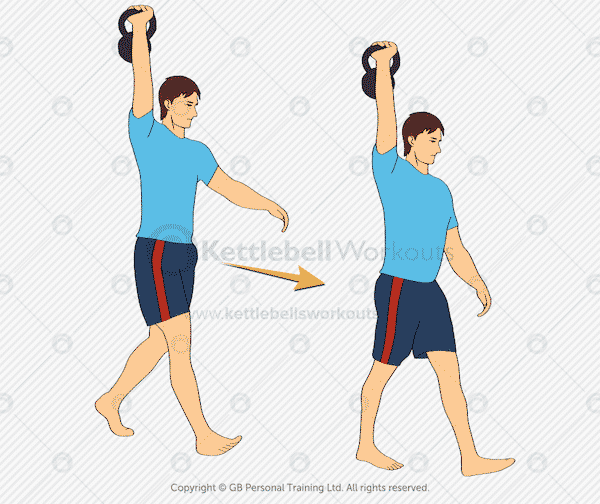
2. Kettlebell Windmill
This adds movement and rotation under load, forcing the shoulder to stabilise through various angles. Perform 5 slow reps per side.
3. Turkish Get Up
This full-body movement trains overhead stability through multiple positions. Start with bodyweight, then add load. Work up to 10 reps total.
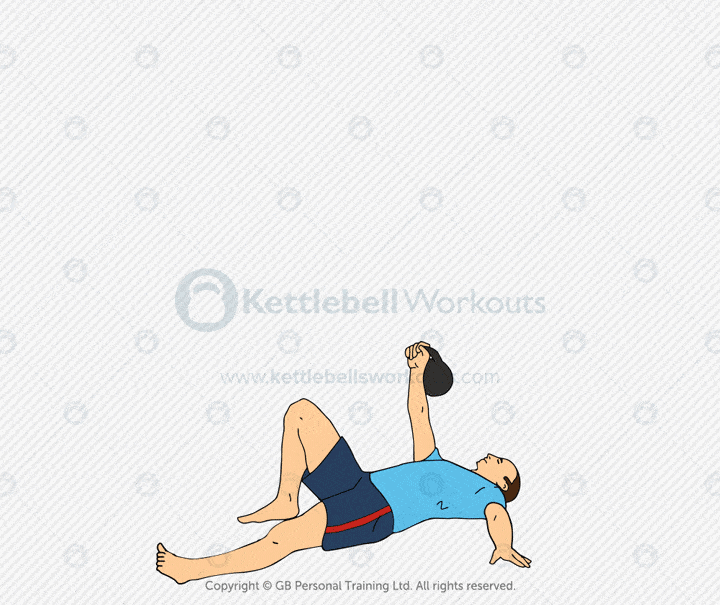
4. Kettlebell Bottoms-Up Clean
Cleans the bell upside down, demanding perfect alignment and grip. Great for prepping the shoulder and improving posture. Hold at the top briefly each rep.

Variations of the Kettlebell Overhead Press
Once you’ve built a strong foundation, add these overhead pressing variations to build strength, stability, and coordination:
1. Half-Kneeling Press
Works core stability and pressing mechanics without full standing balance. Ideal for exposing left-right imbalances.
2. Tall-Kneeling Press
Takes the legs out of the equation, challenging posture and midline control. Keep glutes and abs fully engaged.
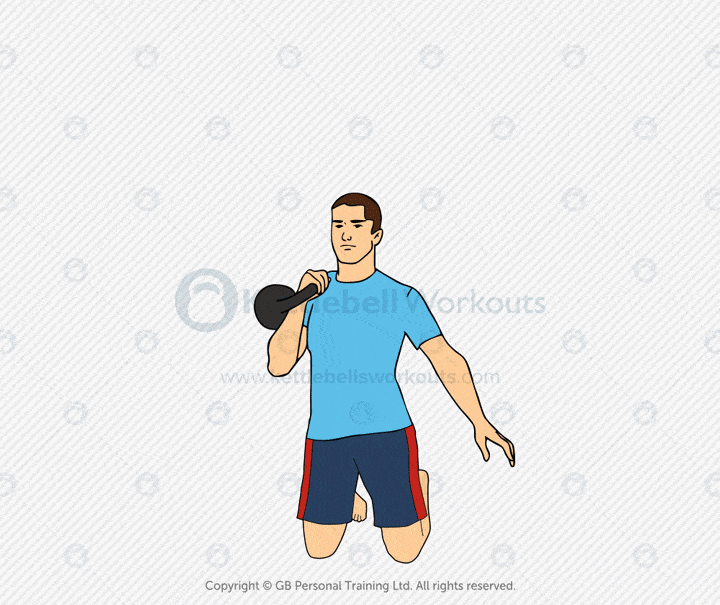
3. Standing Military Press
The classic standing press. Squeeze the entire body, push through the floor, and lockout directly overhead.
4. Push Press
Use a small dip and drive from the legs to assist the bell out of the rack. Helps overload the press or extend high-rep sets.

5. Jerk Press
Use a dip, drive, and drop-under technique to receive the bell locked out. More technical but allows you to lift heavier loads.
6. Bottoms-Up Press
Great for grip strength and alignment. Forces perfect technique or the bell won’t stay upright.

7. Sotts Press
Press from the bottom of a squat. Demands high mobility and coordination. Excellent for advanced lifters.
Pressing Combos for Full-Body Integration
Once confident with the overhead press, combine it with other movements:
1. Clean and Press
Clean the bell to rack position, then press. Classic full-body lift. Can be done with one or two kettlebells.
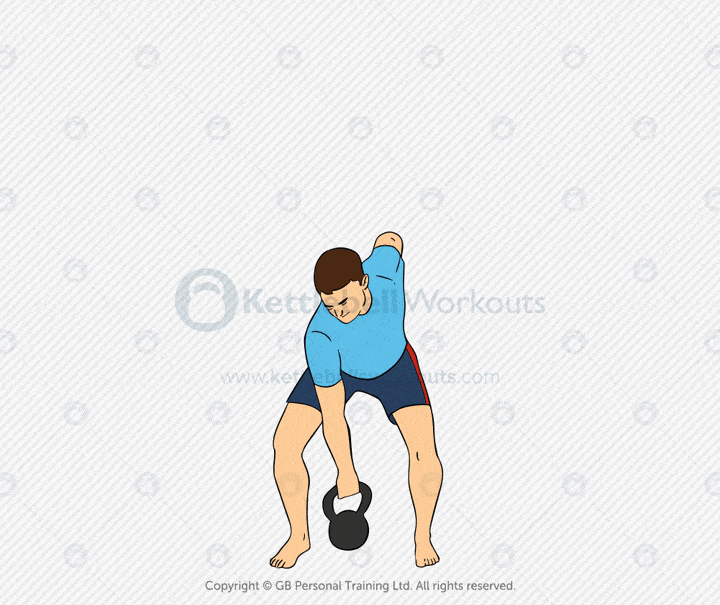
2. Squat and Press (Thruster)
Squat first, then press on the way up. More momentum, more legs, more cardio.

3. Reverse Lunge and Press
Step back into a lunge, then press as you stand. Builds balance and coordination.
4. Static Lunge and Press
Keep the feet planted and alternate lunges with presses. Focuses on midline stability.
5. Sit and Press
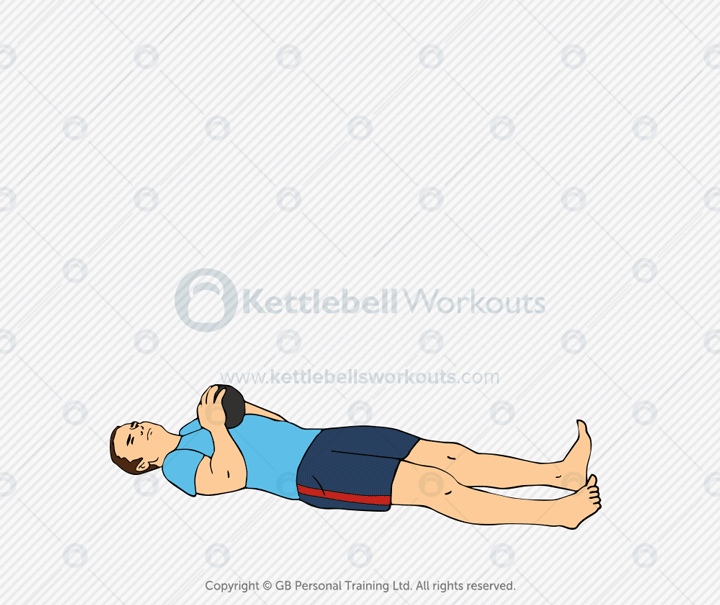
Press from a seated position on the floor. Challenges hip mobility and core strength.
Strength Workout: Ladder Protocol
This simple ladder workout builds pressing strength progressively:
- Press Left x 1
- Press Right x 1
- Press Left x 2
- Press Right x 2
Continue up to 5 reps per side. Rest as needed. Once you can complete 5 rounds with good form, add a second ladder or increase weight.
Repeat this workout 3–5 times per week for consistent strength gains.
Coach’s Insight: Greg’s Take
The kettlebell overhead press is a powerful upper-body builder, but it’s also a test of full-body coordination, posture, and stability. Master the foundations first, especially mobility and overhead stability, before adding load or volume.
It’s one of my go-to exercises for developing athletic movement, bulletproof shoulders, and real-world strength.
Train smart, stay tight, and keep pressing.
Push your limits further. Discover all pressing and overhead drills in my kettlebell exercises hub.
Frequently Asked Questions
Primarily shoulders, triceps, lats, traps, and core muscles.
Women: 8–12kg Men: 12–16kg. Adjust based on control, not ego.
Kettlebells challenge more stabilisers due to the offset weight and shape, offering more functional strength benefits.
Light practice daily is fine. For heavy pressing, rest 48 hours between sessions or more if needed.
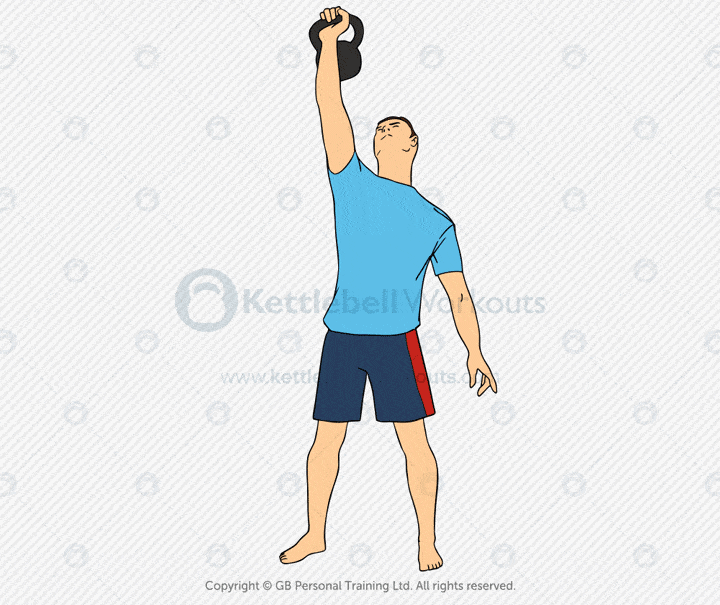




Greg, Do you lose much shoulder strength if you use the push press instead of the military press?
At 69 some days my shoulders don’t feel right
Appreciate your time
All depends on the weight Ralph but I wouldn’t worry too much. If the push press feels more comfortable then use that.
Appreciate your time
Thanks